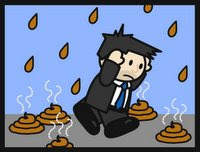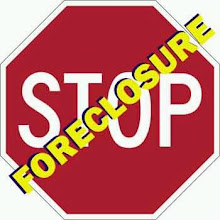June 7th, 2009
Housing counselor Rita Miro (Savemyhomeusa) helps clients with a foreclosure-prevention program recently at the. (George Skene/Orlando Sentinel / June 6, 2009)
Scrambling to stay current with his mortgage, David Vale feared he was surely headed into foreclosure this year. Then the unemployed print-shop-equipment operator heard about a new program for financially troubled homeowners.
Last week, Vale, 59, and his wife, Bobbie, cleared the final hurdle to a “trial loan modification” that will cut their interest rate, lower their monthly payment and give the Orange City couple a fighting chance to save their home.
“My wife lost her job after she became disabled; then I got laid off,” he said. “We were still scraping by, but the handwriting was on the wall. Then we heard about this program that seemed exactly for people like us who had never been late on their mortgage. And it gave us some hope.”
Tens of thousands of people nationwide have tapped the federal Making Home Affordable initiative, the Obama administration said last week. The program, enacted in March, aims to help the millions of people current on their mortgages but struggling with payments and those delinquent on their loans.
Less than three months after its launch, more than 120,000 homeowners have received loan modifications and a few thousand more have gotten refinancings through the program, the Treasury Department reported. The early results are in stark contrast to last year’s ill-fated Hope for Homeowners program, which fell flat after it was beset by red tape and eligibility complications. It drew fewer than 100 applications nationwide after several months.
The new Making Home Affordable program still has a long way to go before it has measurable effect on the nation’s flood of foreclosures. Still, those on the front line of the crisis say it is the most promising initiative so far.
“There’s no comparison to other programs,” said Rosa Miro, a housing counselor with Consumer Credit Counseling of Central Florida who worked with the Vales. “I was never able to put even one client in any of those programs. This one at least gives people a real opportunity to recover.”
What the new program does differently, among other things, is throw some serious money — $75 billion — at the problem to provide financial incentives for all involved.
Financial incentives
In addition to getting more favorable terms, homeowners who qualify for the program and stay current with their loan will get as much as $1,000 a year taken directly off their mortgage principal over five years. Lenders and mortgage servicers will also get $1,000 for processing an application to modify or refinance a loan, plus another $1,000 if they approve the application.
That’s a big change from the past, when loan servicers got nothing for modification work but cash incentives from lenders for doing a foreclosure.
One of the big improvements, homeowner advocates say, was the passage only weeks ago of a federal law that shields mortgage servicers from lawsuits by angry investors in mortgage-backed securities.
The potential for litigation from investors has long been viewed as discouraging mortgage servicers from working with distressed homeowners trying to obtain relief. Simply put, servicers didn’t want to risk being sued if, by modifying people’s loans, they reduced the potential payoff of mortgages bundled and sold as investments.
The shield law and other such measures are gradually changing lenders’ and servicers’ attitudes toward working with troubled homeowners, said Jeff Perdue, president of Orlando Home Mortgage, a brokerage that works mostly with the new program’s refinance guidelines.
“We finally have something we can really work with,” he said. “It’s not a watershed by any means, but it is revolutionary compared to Hope for Homeowners. At least it’s making a dent.”
Foreclosures still soar
Still unclear is how much of a dent the program is making in the pile of foreclosures. Treasury officials would not release data on how many homeowners have applied, so the program’s approval rate is unknown.
In addition to the more than 120,000 loan modifications processed in the first three months, 3,650 homeowners have refinanced their mortgages through Making Home Affordable — a relatively meager total given the number of homeowners in distress. More than 2.4 million new foreclosures are expected by year’s end, according to an estimate by the Center for Responsible Lending, a consumer-watchdog and research group. And that estimate could wind up being low, because a record 12 percent of the 45 million mortgages in the country were delinquent during the first quarter, according to the Mortgage Bankers Association.
Against that backdrop, even the Making Home Affordable program has been pretty slow out of the gate, said Barry Zigas, housing director for the Consumer Federation of America, the nation’s largest consumer-advocacy group.
“I really haven’t seen much of a result from it yet,” he said. “I do understand that most of the biggest servicers have signed up, but this is still moving forward at a slow pace. They have a lot of applications in the pipeline, but foreclosures are still up.”
‘A number of hurdles’
The new initiative has also encountered some of the same problems as the old ones: homeowners getting the runaround at corporate call centers, confusion about program eligibility, uninformed customer-service reps, and mortgage servicers that won’t help borrowers until they’re behind on their loan payments.
“There are still a number of hurdles to overcome,” said Richard Scaggs, chief executive officer of Consumer Credit Counseling of Central Florida. “Overall, we do have a much-improved program now, and we’re getting much more buy-in from the servicers. But it is all so new, there are servicers out there who are really overwhelmed with it all.”
More information about Mortgage Modification Help
http://loanmodificationexplosion.com/
Wednesday, June 10, 2009
Subscribe to:
Post Comments (Atom)












No comments:
Post a Comment